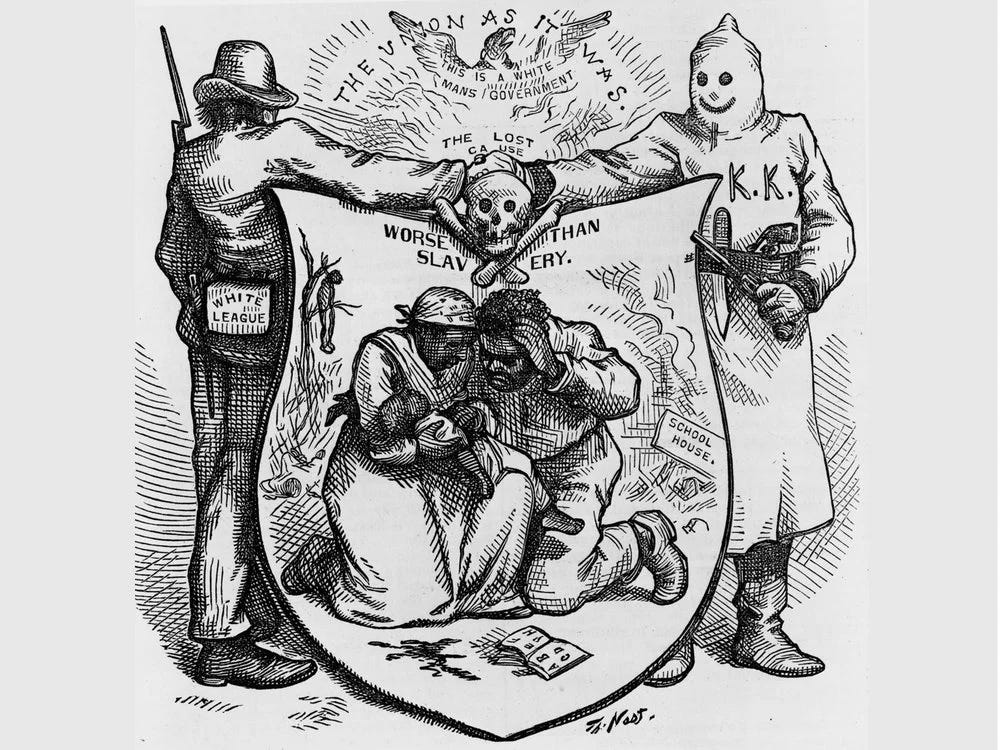Issue #91 American History July 26, 2022 (about 3.5 minutes reading time)
After the end of the Civil War in 1865, the first major task was twofold: 1) to reintegrate the states from the former Confederacy back into the Union, and 2) to assimilate the four million newly-freed people into the United States as equal citizens.
President Abraham Lincoln had some ideas to successfully achieve those goals, but after his death from assassination on April 15, 1865, the newly-inaugurated President Andrew Johnson allowed the legislatures of the southern states to pass extremely restrictive “Black Codes” intended to control the labor and behavior of the formerly enslaved and other African Americans.
The years from 1865 through 1877 were officially called the Presidential Reconstruction and led to a level of violence against Black people that still resonates today.
Here are 5 things to know about Presidential Reconstruction and its relevance to the discrimination and violence that continues until the present time.
Paid subscribers will find the narration of this article below.
Keep reading with a 7-day free trial
Subscribe to We Are Speaking to keep reading this post and get 7 days of free access to the full post archives.




